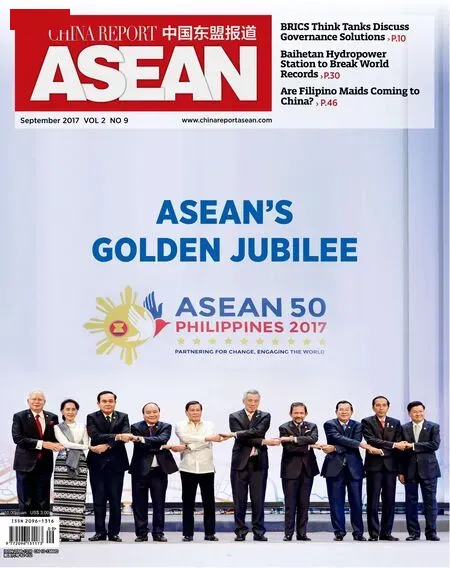The Coming Golden Age
By Tian Yuan
The Coming Golden Age
By Tian Yuan
Combined advantages in population and market scale mean great potential for China-ASEAN development

About the author: Tian Yuan is Economic Daily’s Jakarta Bureau Chief.
Philippine Finance Secretary Carlos Dominguez noted in a recent official statement that the Philippines will benefit from the China-proposed Belt and Road Initiative, particularly the joint construction of the 21st Century Maritime Silk Road, as it echoes his country’s mass infrastructure plan and will open up new markets for Philippine products in countries along the route. As the rotating chair of ASEAN this year, how the Philippines understands the Initiative is of great significance to China-ASEAN cooperation.
Since President Rodrigo Duterte took office last year, the Philippine government has presented a series of economic policies with an ambitious infrastructure program at its core. President Duterte believes that under his administration the Philippines will usher in a “golden age of infrastructure”. Over the past 50 years, infrastructure investment has accounted for only 2.6 percent of the country’s GDP, resulting in transport bottlenecks and high logistics costs.
According to Carlos, therefore, the key to his country’s successful economic transition lies in the improvement of its infrastructure network. To this end, the National Economic and Development Authority presented a list of infrastructure projects this March. Aside from government-funded projects, the list also includes projects relying on loans from partner nations like China and multilateral financial institutions like the Asian Infrastructure Investment Bank. President Duterte has placed great expectations on some of these projects, such as the Kaliwa Dam and the south line of the Philippine National Railways.
The Philippines is not alone on the fast track of development stimulated by the Belt and Road Initiative. Myanmar President U Htin Kyaw pointed out in April that China is the largest among the 49 countries investing in Myanmar.
According to the Ministry of Commerce of China, China remains the largest investor in Myanmar as the year 2016 saw a Chinese non-financial outbound direct investment in Myanmar of US$309 million, a year-onyear increase of 49.8 percent. Encouraged by the Belt and Road Initiative, Chinesefunded enterprises have enhanced their presence in various sectors of the Myanmar market and improved their interaction with local communities. For example, the infrastructure connectivity between China and Myanmar in railway, road and power generation has been promoted through projects such as the border economic cooperation zone, the Kyaukpyu port and industrial zone and the Yangon port and industrial zone.
Indonesia, a pivot on the 21st Century Maritime Silk Road, is another active participant in the Belt and Road Initiative. Indonesian Ambassador to China Soegeng Rahardjo noted in a recent interview that since Indonesia is an important shipping hub connecting the Pacific Ocean and the Indian Ocean, President Joko Widodo sees his country's role as a "global maritime axis" and puts much emphasis on the development of maritime infrastructure and the marine economy, which is a strategic approach in line with the China-proposed plan. “China is the world's second largest economy as well as Asia's largest and most dynamic market,” Rahardjo said.“Indonesia is the largest economy in ASEAN and an important player on the Asian market. With the two countries’ combined population totaling nearly 1.7 billion, cooperation between China and Indonesia means wining one-fifth of the global market share. Flagship projects like the Jakarta-Bandung railway will not only bring convenience to local residents along the route, but also help Indonesia upgrade its transportation network and benefit from the development of high-speed rail. These projects will also set a good example of international economic cooperation and global economic governance.”

